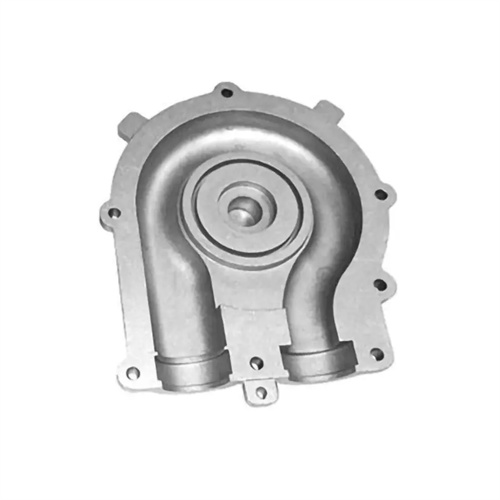Die casting mold temperature and mold thermal balance
The temperature of a die-casting mold refers to the operating temperature of the mold during the die-casting process. It is one of the key factors affecting the filling, solidification, and quality of the molten metal. The mold temperature directly determines the cooling rate of the molten metal within the cavity. When the mold temperature is too high, the molten metal cools slowly, prolonging the solidification time. This not only reduces production efficiency but can also lead to coarse grains and reduced strength in the casting, while increasing the risk of mold sticking. When the mold temperature is too low, the molten metal cools rapidly, and its fluidity decreases rapidly, making defects such as under-casting, cold shuts, and cracks more likely to occur. These problems are particularly prominent for thin-walled, complex castings. Therefore, the mold temperature needs to be controlled within a reasonable range. For example, the temperature of aluminum alloy die-casting molds is typically controlled between 150°C and 250°C, while the temperature of zinc alloy die-casting molds is generally between 100°C and 180°C. The specific value needs to be adjusted according to the casting structure and alloy properties.

Mold thermal balance refers to the state in which the heat absorbed and dissipated by the mold during continuous production reaches a dynamic equilibrium. During the die-casting process, hot molten metal transfers a significant amount of heat to the mold, causing the mold temperature to rise. Simultaneously, the mold dissipates heat through heat exchange with the surrounding environment (such as air cooling or cooling with a water jacket), reducing the mold temperature. When the heat absorbed by the mold equals the heat dissipated, the mold temperature remains stable, indicating thermal equilibrium. The stability of mold thermal balance is crucial to the consistent quality of castings. If thermal balance is disrupted and mold temperature fluctuates significantly, variations in solidification shrinkage and dimensional accuracy can occur between batches of castings, increasing scrap rates. For example, in the early stages of production, the mold temperature is low, the heat absorbed exceeds the heat dissipated, and the temperature gradually rises. As production continues, the heat balance gradually balances, the mold temperature stabilizes, and the quality of the castings produced is most consistent.

Uniform mold temperature distribution is an important prerequisite for achieving mold thermal balance. In actual production, due to the varying wall thicknesses of various parts of the casting and their varying contact time with the molten metal, the temperatures of various areas of the mold often differ: the mold areas corresponding to thick-walled areas of the casting have higher temperatures, while the mold areas corresponding to thin-walled areas have lower temperatures. This uneven temperature distribution can lead to uneven thermal stress distribution in the mold, which can cause deformation or cracking of the mold over time. It can also cause inconsistent cooling rates in various parts of the casting, resulting in internal stress and deformation. To improve mold temperature distribution, it is usually necessary to rationally arrange cooling water channels during the mold design phase. This flow of cooling water removes excess heat and uniformizes the temperature of each area of the mold. For example, dense cooling water channels can be installed in key areas of the mold, such as the cavity and core, while the amount of cooling water can be appropriately reduced in areas with lower temperatures to balance the temperature field of the entire mold.

The control of mold thermal balance requires fine-tuning in combination with the production rhythm and cooling system. The speed of the production rhythm will affect the heat accumulation of the mold: when the production rhythm is fast, the heat transferred from the molten metal to the mold is more intensive, and the heat dissipation capacity of the cooling system needs to be enhanced, such as increasing the flow rate of the cooling water or lowering the temperature of the cooling water; when the production rhythm is slow, the mold has sufficient heat dissipation time, and the cooling intensity can be appropriately reduced to avoid the mold temperature being too low. In addition, the design of the cooling system also directly affects the control effect of the thermal balance. For example, the use of a closed-loop cooling system can realize automatic adjustment of the cooling water temperature and flow, and dynamically adjust the cooling parameters according to the real-time monitoring data of the mold temperature to ensure that the mold is always in a thermal balance state. For large and complex molds, zoned cooling technology can also be used to independently control the cooling water channels in different temperature zones to further improve the control accuracy of the thermal balance.

Optimizing mold thermal balance is crucial for improving production efficiency and reducing costs. When the mold is in a stable thermal equilibrium state, the cooling time of the casting can be precisely controlled, helping to shorten production cycles and increase yield per unit time. Furthermore, stable mold temperature reduces casting defects and reduces scrap losses. Furthermore, proper thermal balance control can extend mold life: Excessive mold temperature fluctuations can exacerbate mold fatigue damage caused by alternating stresses due to thermal expansion and contraction. A stable thermal equilibrium reduces these alternating stresses, slowing mold wear and aging. For example, an automotive parts die-casting company optimized its mold cooling system to control mold temperature fluctuations within ±5°C when in thermal equilibrium. This reduced casting scrap by 15% and extended the mold life by 20%, significantly improving the company’s economic benefits. With the advancement of die-casting technology, mold thermal balance control is moving towards intelligent and digitalization. By combining computer simulation and real-time monitoring technologies, precise prediction and dynamic adjustment of mold thermal balance are achieved, effectively ensuring efficient and stable operation of die-casting production.
